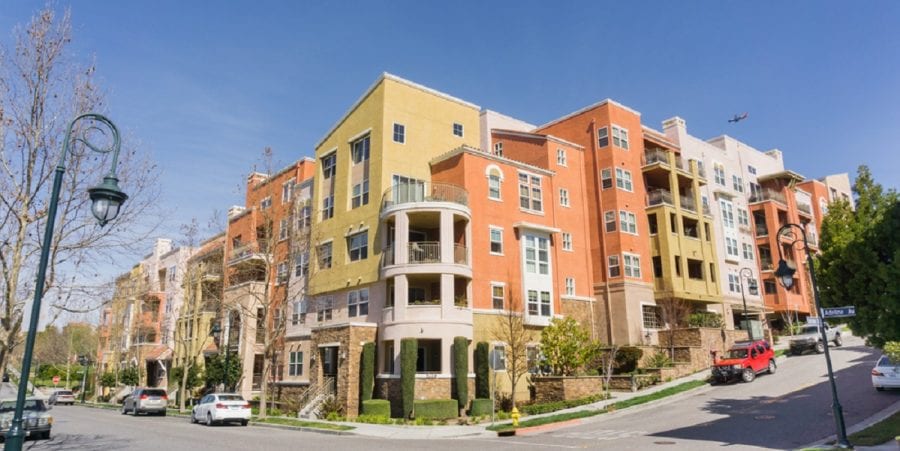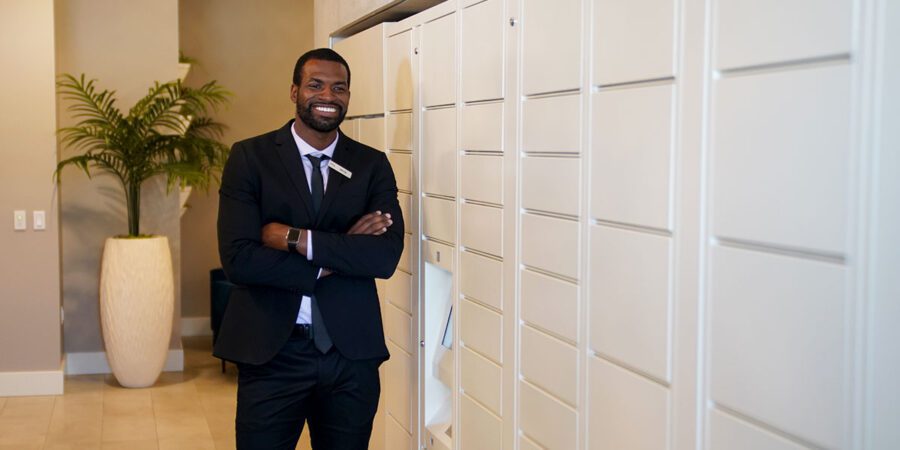
Multifamily
Adopting Smart Technology for Multifamily Operations in a Post-COVID World
Written by: Parcel Pending
5 Min Read
Published: April 8, 2021
Updated: March 29, 2023
Ten years ago, Nest Labs introduced its first smart thermostat, fueling opportunities for the future of smart tech in multifamily operations. With the permanent disruption in apartment housing caused by the pandemic, property management must analyze what’s working and what’s not to attract and retain residents.
The Trend Dynamics of Gen Z
The 2019 script for high schoolers was that they would high-tail it off to college, rent an apartment, live with roommates, and then quickly join the workforce. Fast forward to 2020/2021 and the numbers tell a different story. An unprecedented 40% of high schoolers considered a “gap year”, a record-high 68% of the younger generation aged 18-24 lived with their parents, co-living fell to its lowest rate, and high unemployment rates translated into a tough job market1,2. What do these trends mean for multifamily property managers?
These shifts translate into demand for amenities that fit emerging and/or changing needs for both Generation Z (born between 1996 and 2010) and other demographic pods. The focus needs to be on smart property management, specifically smart technology, safety, and work from home amenities that both meet customer needs and offer a positive return on investment.
Smart Property Management is Key
Even in 2020, the NMHC/Kingsley survey, which includes responses from nearly 373,000 apartment residents, shows more than 75% of respondents are interested in smart thermostats, more than 70% are interested in smart lighting, and more than 60% are interested in smart locks3. Residents are no longer interested in unnecessarily touching surfaces, leading to the rise of touchless elevators, lights, and keyless entry. In fact, 60% of potential tenants were likely to rent an apartment because of electronic access features4.
In one study, 86% of millennials (those born between 1980 and 1995) stated they are willing to pay more for an apartment equipped with automated or remotely-controlled devices5. And even 65% of baby boomers living in multifamily homes are willing to do the same!
High-Speed Internet is Essential
With 42% of employees working from home, speedy Internet is a must6. Residents expect that broadband will be available from the day they move in. More importantly for property management, however, is that they are willing to pay higher rent for high-speed internet access—about $35 more7.
Virtual Tools as a Safety Precaution
Even with vaccinations rolling out, most Americans are still looking at face-to-face interactions cautiously. Virtual tours and contactless rentals have emerged as a necessary first step and even a knockout round. Recent statistics demonstrate that 67% of people want more businesses to offer virtual tours8. And customers aged 18 to 34 are 130% more likely to book a place if there is a virtual tour. Management: take note.
Amenities for Safety and Satisfaction
Certain amenities have morphed from luxuries into necessities and now define what is expected in a modern apartment complex. On-site laundry, gyms, and pools are no longer enough. Residents too are also seeking accommodation for safe workouts, space for a work Zoom call, and outdoor space that reflects current protocols. CGI Strategies, a California-based real estate investment and development company, previously stated that approximately 70% of their apartments included balconies9. They are now aiming for at least 90% in new projects.
Enter the Necessity of Smart Lockers
With the exponential rise in online shopping, there is a concurrent spike in residential deliveries. eCommerce’s share of all retail sales hit a jaw-dropping 23% during the third quarter of 202010. This statistic translates into as many as 486 packages being delivered per week to some multifamily properties!
Renters expect their packages to be stowed safely and securely. Standing in a line to retrieve packages during management’s office hours no longer meets expectations and is simply not a viable package room solution. Smart lockers, however, allow residents to retrieve their packages in less than 10 seconds, on their schedule, with zero human interaction
Smart locker technology allows residents to automatically get notified when they receive a package. They are then given a unique access code that they manually enter or a barcode they can scan for contact-free access to their delivery. Best of all, property management is out of the equation, lowering labor hours by as many as 24 hours weekly.
A Positive Return on Investment
Properties typically see a faster and higher than average return on investment for smart technology – particularly for smart home technology. An A.C. Lewis Management property in Baton Rouge cited a projected return on smart tech investments of 30%, well above the average capital investment return of 10%. Not to mention the shorter ROI turnaround time. Smart package lockers have the fastest ROI at an average of 8 months, while smart locks and thermostats provide ROI within roughly three years11.
Further, installing package lockers can lift lease renewals by a whopping 40%!
We all know that the world has permanently changed: what worked yesterday won’t work tomorrow. Investing in proptech and smart home technology that meets the demands of all generations is a sure-fire way to attract and retain residents.
To see how smart lockers can play a key role in the equation, contact a Parcel Pending sales representative today.
Sources:
- Horn, Michael B. EdSurge. Unprecedented Numbers of Students Are Taking a Gap Year. What Should They Do With the Time?. (2020, August 17). https://www.edsurge.com/news/2020-08-17-unprecedented-numbers-of-students-are-taking-a-gap-year-what-should-they-do-with-the-time.
- National Multifamily Housing Council. Keeping Pace with Changing Resident Expectations and Experiences. (2021, February 5). https://www.nmhc.org/news/nmhc-news/2021/keeping-pace-with-changing-resident-expectations-and-experiences/.
- National Multifamily Housing Council. (2019, November 12). 2020 NMHC/Kingsley Apartment Resident Preferences Report [Report]. Retrieved from: https://www.nmhc.org/research-insight/research-report/nmhc-kingsley-apartment-resident-preferences-report/
- Rieder, Elie. Forbes. Strike the Right Balance With ‘Smart’ Tech to Boost Multifamily ROI. (2018, May 29). https://www.forbes.com/sites/forbesrealestatecouncil/2018/05/29/strike-the-right-balance-with-smart-tech-to-boost-multifamily-roi/?sh=56c0287219af.
- Schlage. (2016, November 29). Results of Schlage’s Industry Insight Survey Reveals What Millennial Renters Want in 2017 [Press release]. Retrieved from: https://www.prnewswire.com/news/schlage/
- Wong, May. Stanford. Stanford research provides a snapshot of a new working-from-home-economy. (2020, June 29). https://news.stanford.edu/2020/06/29/snapshot-new-working-home-economy/#:~:text=We%20see%20an%20incredible%2042,working%20on%20their%20business%20premises
- Friedman, Robyn. Multi-Housing News. How to Attract Remote Workers to Your Apartment Community. (2021, January 28). https://www.multihousingnews.com/post/how-to-attract-remote-workers-to-your-apartment-community/.
- Digital in the Round. 13 Mind-Blowing Virtual Tour Statistics [Updated for 2021]. (2021, March 11). https://digitalintheround.com/virtual-tour-statistics/.
- Kalinoski, Gail. Multi-Housing News. How Will the Pandemic Impact Future Apartments?. (2020, August 5). https://www.multihousingnews.com/post/how-will-the-pandemic-impact-future-apartments/.
- Kapner, Suzanne. The Wall Street Journal. Covid-19 Rewrote the Rules of Shopping. What’s Next?. (2021, March 12). https://www.wsj.com/articles/covid-19-rewrote-the-rules-of-shopping-what-is-next-11615561232.
- Parcel Pending. Parcel Pending Lockers Showing Solid ROI. (2017, August 17). /en-us/blog/parcel-pending-lockers-showing-solid-roi/.



